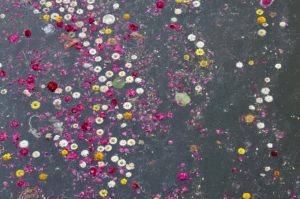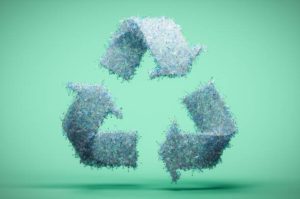Mullick Ghat Flower Waste Recycling: Historically, this floral refuse has been picked up by the Kolkata Municipal Corporation (KMC) and dumped at the Dhapa dumping ground, a huge landfill on the city’s eastern periphery. There, in addition to food waste, plastics, and biomedical waste, the flowers slowly rot, releasing greenhouse gases and seeping into the ground.
The cultivation of combining natural floral waste with common trash not only worsens environmental pollution but also amounts to a senseless waste of natural, biodegradable material, which has enormous unused potential. Because of the natural composition of flowers, they are extremely compost-friendly, and natural oils and coloring matter can be recovered for industry use in applications such as perfumery, cosmetics, incense sticks, and even natural dyes.
Mullick Ghat Flower Waste Recycling: Sacred Waste: A Cultural Dilemma
Moreover, religious sentiments are often tied to flowers, especially those used as offerings to deities in temples and homes. Many people are uncomfortable with the idea of these sacred remnants being carelessly dumped in trash heaps or riverbanks. This adds a moral and emotional dimension to the urgency of finding a more respectful and sustainable disposal method for floral waste.
Mullick Ghat Flower Waste Recycling: A Call for Reform – Turning Trash into Treasure


In light of these challenges, civic officials, environmentalists, and entrepreneurs have increasingly raised questions about how Kolkata can manage its flower waste more responsibly. The sheer volume generated at Mullick Ghat—often several truckloads daily—makes it a prime candidate for targeted waste recycling initiatives. The need of the hour is a comprehensive solution that transforms this visually stunning yet environmentally harmful phenomenon into an opportunity for sustainable growth, job creation, and circular economy.
KMC Steps Up: A New Vision for Floral Waste Management
In response to this issue, the Kolkata Municipal Corporation (KMC) has initiated discussions with the state horticulture department and the Kolkata Port Trust (KoPT) to explore sustainable methods for processing the discarded flowers. The proposed plan involves converting floral waste into valuable products such as natural incense sticks, perfumes, and ‘abir’—the colored powder prominently used during festivals like Holi. By implementing this strategy, the KMC aims to reduce environmental pollution, promote sustainable practices, and provide an additional revenue stream for local flower vendors.
Learning from the Past: Temple Models as Inspiration
The concept of recycling floral waste is not unprecedented in the region. The Dakshineswar Kali Temple previously operated a successful flower processing unit for seven years, transforming floral offerings into eco-friendly products. Unfortunately, the initiative was halted due to the COVID-19 pandemic. Learning from such models, the KMC envisions establishing a similar facility at Mullick Ghat as part of a broader effort to modernize the market and enhance its infrastructure. This modernization includes constructing proper concrete pathways to prevent accidents and improve the overall functionality of the market.
India’s Growing Green Economy: From Waste to Worth


The initiative aligns with a growing trend across India, where entrepreneurs and organizations are finding innovative ways to repurpose temple flower waste. For instance, the Kanpur-based startup HelpUsGreen has been instrumental in collecting floral waste from temples and converting it into organic incense sticks and fertilizers. This not only addresses the problem of river pollution caused by flower dumping but also creates employment opportunities for local communities. Similarly, Mysore Deep Perfumery House (MDPH) collaborated with HelpUsGreen to launch ‘Nature Flower’ incense sticks, made entirely from recycled flowers, further exemplifying the potential of such eco-friendly ventures.
Benefits Beyond Waste Reduction
Implementing a flower recycling project at Mullick Ghat could yield multiple benefits:
- Environmental Impact: Reducing the volume of waste transported to landfills and minimizing river pollution caused by flower dumping.
- Economic Opportunities: Creating new revenue streams for flower vendors and generating employment in the processing and manufacturing sectors.
- Cultural Preservation: Producing traditional products like incense and ‘abir’ that hold significant cultural and religious value.
- Market Modernization: Enhancing the infrastructure and safety of Mullick Ghat, making it more accessible and efficient for traders and customers alike.
A Model for the Future
As the KMC continues to collaborate with relevant stakeholders, the success of this initiative could serve as a model for other cities grappling with similar issues, demonstrating how sustainable practices can be integrated into urban management to benefit both the environment and the economy.
Also read: Home | Channel 6 Network – Latest News, Breaking Updates: Politics, Business, Tech & More


